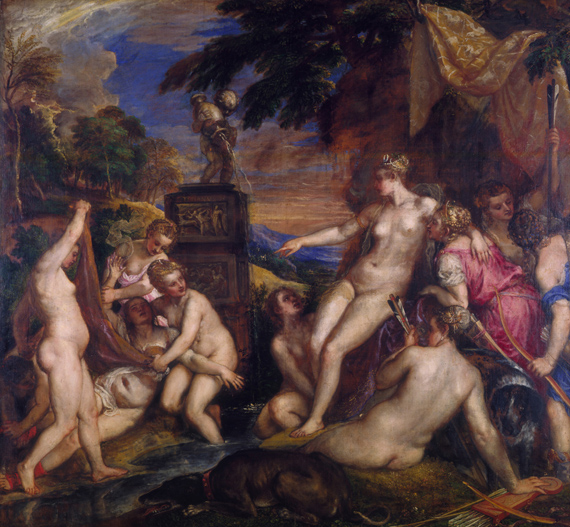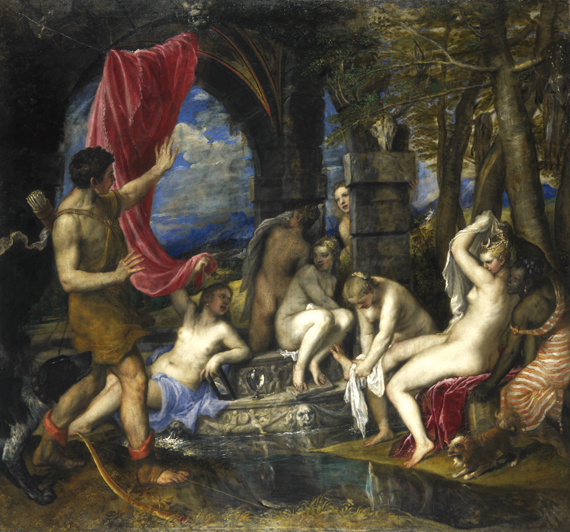
The High Museum of Art has opened its latest exhibition, titled, “Titian and the Golden Age of Venetian Painting,” on view from Oct. 17 through Jan. 2, 2011. The exhibition includes 25 masterpieces of the Venetian Renaissance, including two of the greatest paintings of the Italian Renaissance, Titian’s “Diana and Actaeon” and “Diana and Callisto,” which have never before traveled to the United States. The collection also includes paintings and drawings from Venetian Renaissance artists such as Lorenzo Lotto, Jacopo Tintoretto, Jacopo Bassano and Paolo Veronese.
The “Titian” exhibition marks a new collaboration between the High Museum of Art and the National Galleries of Scotland, from which the artwork is loaned — additional exhibitions are currently under development.
“For centuries, these paintings have mesmerized the public and influenced generations of artists,” said Michael E. Shapiro, director of the High Museum of Art. “In the 65 years that the Titians have been on public display in Edinburgh, people have made pilgrimages to Scotland to see them and other works in the National Galleries’ exquisite Venetian collection. Now, the people of Atlanta and the southeast region, as well as other parts of the U.S., can see these great works from the height of the Venetian Renaissance.”
Titian, born Tiziano Vecellio (ca.1485/90–1576), is heralded as the greatest of all Venetian Renaissance artists. His painterly technique, narrative skill and psychological insight brought him success during his lifetime, patronized by leading Italian families as well as European royalty, including Holy Roman Emperor Charles V and King Philip II of Spain. The main showpieces of the exhibition, “Diana and Actaeon” and “Diana and Callisto,” were painted for King Philip II between 1556 and 1559, when Titian was at the height of his career.

The masterpieces depict scenes from Ovid’s ancient Roman epic poem “Metamorphoses,” showing corpulent nymphs lounging amongst idyllic scenery. The main character of the paintings is Diana, “a cruel and angry goddess,” as noted by Michael Clarke, director of the National Gallery in Scotland. The nymphs are at her command, despite being in repose. The stances and visibility of their bodies are reminiscent of erotica, which was a popular theme in art at the time. Clarke added, “These paintings celebrate the flesh.”
“I don’t think anyone really equals [Titian] and I can’t think of anyone before him who dared to paint in this way. That is why he’s quite so remarkable. He breaks all the academic rules, in a way,” observed Clarke. “To me, [these paintings] are the most beautiful pictures in the world. Once you’ve seen them, you want to see them again and again.”
























